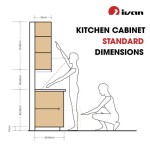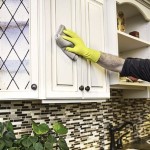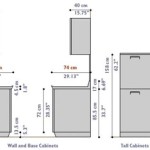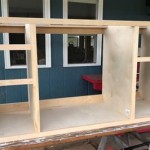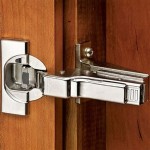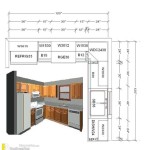Can You Put Kitchen Cabinets On Laminate Flooring? An In-Depth Examination
The question of whether kitchen cabinets can be installed on top of laminate flooring is a common one encountered during kitchen renovation projects. The answer, however, is not a simple yes or no. A comprehensive understanding of the potential issues and best practices is necessary before making a decision. Factors such as the type of laminate flooring, the weight and configuration of the cabinets, and the subfloor condition all play a significant role in determining the feasibility and long-term stability of such an installation.
Directly installing kitchen cabinets on laminate flooring can, in certain circumstances, lead to complications. Laminate flooring, designed to be a floating floor system, expands and contracts with changes in temperature and humidity. When cabinets are placed on top, they restrict this natural movement, potentially causing issues like buckling, gapping, and even damage to the laminate itself. Furthermore, the concentrated weight of fully loaded cabinets can compress the laminate flooring unevenly, leading to instability and potential structural problems over time. The following sections will examine the key considerations in detail.
Understanding the Floating Floor System of Laminate
Laminate flooring is typically installed as a "floating floor," meaning it is not directly adhered to the subfloor. Instead, individual planks or tiles interlock to form a single, continuous surface that rests upon an underlayment. This underlayment provides cushioning, sound insulation, and moisture protection. The floating design allows the entire laminate floor to expand and contract in response to environmental changes. This is a crucial element of its long-term performance. Constraining this movement can lead to significant problems.
The reason for this floating design is that the core materials of laminate flooring, usually high-density fiberboard (HDF) or medium-density fiberboard (MDF), react to moisture. While the wear layer provides some protection, changes in humidity can still cause the core to swell or shrink. The expansion gaps left around the perimeter of the room, typically hidden by baseboards, allow the floor to move freely without putting pressure on the walls. When heavy objects like kitchen cabinets are placed on top of the laminate, this movement is restricted. Consequently, the laminate may not be able to expand evenly, potentially leading to warping, buckling, or separation at the seams.
In addition, the weight of the cabinets can exert significant downward pressure on the laminate, further impeding its ability to move freely and potentially crushing the interlocking edges. This can damage the integrity of the floor and create uneven surfaces. Therefore, understanding the mechanics of a floating floor system is paramount when considering installing cabinets on top of it.
Potential Problems with Cabinet Installation on Laminate
Several potential problems can arise from installing kitchen cabinets directly on laminate flooring. These problems range from cosmetic issues to serious structural concerns that could compromise the longevity and safety of the kitchen.
One of the most common issues is the restriction of the laminate's natural expansion and contraction. As mentioned previously, this can lead to buckling or gapping, particularly in areas where the cabinets are heavily loaded. The problem is often exacerbated during seasonal changes when temperature and humidity fluctuations are most pronounced.
Another concern is the potential for uneven weight distribution. Kitchen cabinets, especially when filled with dishes and appliances, can exert considerable weight. If the weight is not evenly distributed across the laminate floor, certain areas may experience excessive compression. This can lead to localized damage to the laminate, resulting in dips or unevenness in the floor surface. Over time, this unevenness can worsen, potentially affecting the functionality and aesthetics of the kitchen.
Furthermore, installing cabinets on laminate can make future flooring replacements more difficult and expensive. When it's time to replace the laminate, the cabinets will need to be removed, which could require specialized tools and expertise. In some cases, the removal process may damage the cabinets or the surrounding walls and trim. Leaving an indentation where the cabinets once stood and creating a new flooring surface that is not flush with the lower edge of the cabinets is also a concern.
Finally, installing cabinets directly on laminate may void any warranties associated with the flooring. Most laminate flooring manufacturers specify installation guidelines that explicitly prohibit placing heavy objects on top of the flooring. Violating these guidelines could render the warranty null and void, leaving the homeowner responsible for any repairs or replacements necessitated by the improper installation.
Alternative Solutions for Cabinet Installation
Given the potential problems associated with installing kitchen cabinets directly on laminate flooring, several alternative solutions are available to mitigate these risks and ensure a more stable and long-lasting installation.
One of the most recommended solutions involves removing the laminate flooring from the area where the cabinets will be installed. This allows the cabinets to be placed directly on the subfloor, providing a solid and stable foundation. After the cabinets are installed, the laminate flooring can be re-installed around them, leaving a small expansion gap. This ensures that the laminate can still expand and contract without being constrained by the cabinets.
Another option is to install a plywood subfloor section where the cabinets will be located, matching the height of the existing laminate. This approach provides a stable, level surface for the cabinets while allowing the surrounding laminate to float freely. It requires careful measurements and precise cutting to ensure a seamless transition between the plywood and the laminate, but it can be an effective solution in some situations.
A third alternative is to install the cabinets before the laminate flooring. In this scenario, the cabinets are installed directly on the subfloor, and the laminate flooring is installed around them. This approach ensures that the cabinets have a solid foundation and that the laminate flooring can expand and contract freely. However, it requires careful planning and coordination to ensure that the flooring meets the cabinets seamlessly and that the baseboards effectively conceal the expansion gaps.
Finally, utilizing a robust and higher-quality underlayment specifically designed for use under heavy loads can help. While it doesn’t eliminate the issue entirely, a denser, more supportive underlayment can help distribute the weight of the cabinets more evenly and reduce the potential for compression and damage to the laminate. This option may be suitable for lighter cabinets or situations where removing the laminate is not feasible but must be combined with other precautions.
Each of these solutions requires careful consideration and planning to ensure a successful outcome. Consulting with a professional flooring installer or kitchen designer is highly recommended to determine the best approach for a specific situation and to ensure that the installation is performed correctly.
When considering a kitchen renovation project involving laminate flooring, it is crucial to prioritize the long-term stability and functionality of the installation. Simply placing cabinets on top of the laminate can lead to a range of problems that ultimately compromise the integrity and lifespan of both the flooring and the cabinets.
Proper planning and preparation are particularly important. Consider the type of laminate flooring, the weight and configuration of the cabinets, and the condition of the subfloor. For example, some types of laminate flooring are more resistant to compression than others. Higher-quality laminates with thicker wear layers and denser cores are generally better able to withstand the weight of cabinets. Similarly, the weight distribution of the cabinets is a critical factor. Tall, narrow cabinets filled with heavy objects will exert more concentrated pressure on the floor than wider, shallower cabinets.
Furthermore, thorough preparation of the subfloor is essential. A level and stable subfloor is crucial for ensuring that the laminate flooring is properly supported and that the cabinets are evenly distributed. Any imperfections in the subfloor should be addressed before installing the laminate or the cabinets. This may involve patching cracks, leveling uneven areas, or reinforcing weak spots.
Ultimately, the decision on how to proceed should be based on a careful assessment of all the relevant factors and a thorough understanding of the potential risks and benefits of each approach. Seeking professional advice is a wise investment that can help ensure a successful and long-lasting kitchen renovation.

Do You Install Floating Floor Under Cabinets Wood Flooring

Do You Install Floating Floor Under Cabinets Wood Flooring

Can I Use Laminate Flooring Under Cabinets

Should I Install My Flooring Before Or After New Cabinets

Kitchen Cabinets Were Installed Before The Floor

What Is A Floating Floor Diamond Kitchen And Bath

Can You Replace Kitchen Flooring Without Removing Cabinets

Before Or After Cabinet Installation Four Considerations To Help Finalizing Your Flooring Kraftmaid

Do You Install Flooring Before Cabinets Best Practices Reallyfloors America S Est Hardwood

Laminate Flooring In Kitchens Do It Yourself Installation
Related Posts

